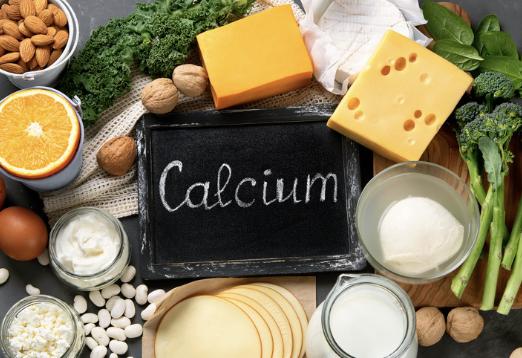A mineral that fabricates solid bones and teeth and keeps the working of muscles, the digestive tract, muscles, heart, and nerves. Calcium is also essential for muscle contraction, blood pressure regulation, and nerve transmission. It aids in the secretion of enzymes and hormones throughout the body children require more calcium for skeletal structural growth.
When calcium is deficient in the blood, it raises a condition called hypoglycemia. The body needs calcium in the blood. Hormones control the level of calcium in the blood, such as PTH (parathyroid hormone) and vitamin D, and the calcium act on the intestine, bone, and kidneys. Bone development occurs in kids and teens ages. So, during adulthood, children with calcium have more robust bones that shield them and protect them against bone loss in later life.
Causes of calcium deficiency
Hypocalcemia can occur due to the following reasons;
* Vit D deficiency (as it needs for the absorption of calcium)
* Renal and hepatic diseases as these reduce vitamin D levels in the body and, ultimately, calcium deficiency.
Symptoms
Hypocalcemia can be observed by a parent in their children if the child has the following:
* Vomiting
* Business
* Jitteriness
* Feeding problems
* Sluggishness
* Seizures
Tips:
* Introduce Calcium-rich foods
Make your child eat foods that contain calcium, such as:
Low-fat milk, yogurt, soy milk, cheese, tofu, figs, beans, leafy greens such as spinach, broccoli, Chinese cabbage, kale, collard greens, seeds such as sesame seed, almonds, and flax seed seeds.
* Calcium supplements
* Calcium-fortified foods
make your child eat the following: fortified cereals, calcium-fortified orange juice, calcium-fortified rice milk or soy, and vitamin D-fortified plain yogurt or fruit.
* Increase intake of Vitamin D-rich foods
These include the following: Salmon, sardines, egg yolk, margarine, cod liver oil, whole milk, and butter.
* Avoid calcium Binders
Avoid calcium-binding foods from your child’s diet, such as:
* Caffeine, phytates, oxalate, fats, fibers, and alcohol.
* Fitin in grain products reduces calcium absorption, so avoid this from your child’s diet.
* Oxalic acid in cocoa, spinach, sorrel, rhubarb, and Iron rich foods.
* Try to lower sodium intake
Excess sodium intake can cause excess calcium excretion, so limit sodium-rich foods from your child’s diet.
* Introduce exercise and physical activity
Introduce weight-bearing exercises or physical activities to your child, such as running and jumping, that make your bones healthy and aid in absorbing calcium.
* Incorporate the following in daily meals to increase calcium intake
Make your child eat the following
* Parfaits of whole-grain cereals, plain yogurt, and fruit.
* Smoothies with fresh fruits, low-fat, almond, or calcium-fortified soy milk.
* Add almond butter to the diet instead of peanut butter.
* Add chickpeas and almonds to salad or cereal.
* Add white beans to your child’s favorite soups, sesame seeds to baked goods, or sprinkle them on vegetables.
Conclusion
Calcium is vital for our body. Hypocalcemia can cause bone and teeth diseases and many other health issues. Calcium-rich foods are required to maintain hypocalcemia. Vitamin D is crucial for calcium absorption. Introduce your child with calcium and vitamin D-fortified foods to your child. Avoid foods that are binders for calcium, such as oxalate and phytates, from your child’s diet and make them do physical activities.

